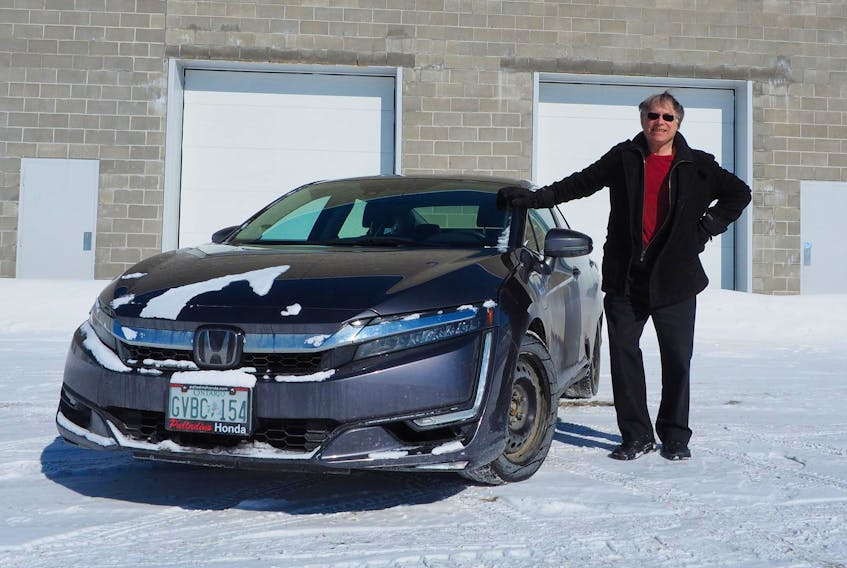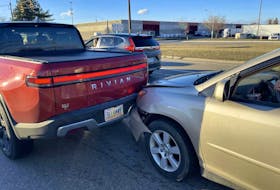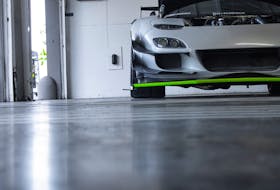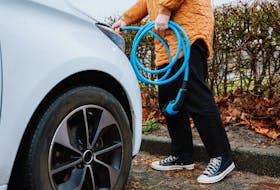Most forecasts indicate that more Canadians than ever will soon have a plug-in hybrid (PHEV), or maybe even an electric vehicle (EV) in their driveway. Not long ago, electrified vehicle choices were extremely limited, and few shoppers considered them.
Today, the market has more choices than ever to consider and, if recent news is any indication, many more are coming soon.
At the moment, driving a pure EV isn’t for everyone. That’s why growth of the PHEV is forecast to be more substantial in the shorter term. A PHEV works like an electric vehicle for shorter distances, and has a battery that needs to be plugged in to recharge. But, when that battery is depleted after a few dozen kilometres of driving, a gasoline engine engages to provide hundreds of kilometres of additional driving.
Since the PHEV makes more sense for more shoppers, they’ll likely be a bridge to EV ownership for many. In an EV, all driving is electric, and there’s no gasoline involved, in any way. Thing is, currently, many Canadian drivers are apprehensive about the EV, their driving range, their recharging times, and their cold-weather performance.
We expect improvements on those fronts across the board in the coming months and years though, at this very moment, it is the PHEV, not the EV, that’s positioned to attract more drivers to plug-in vehicles.
But what might the end of gasoline-powered driving look like? And, in the interim, how might fuel prices be affected as the market shifts more and more toward vehicles that use less and less fuel?
I turned to Dr. David Robinson for some help sorting things out. Dr. Robinson is an economist, and currently teaches economics at Laurentian University, my former post-secondary school. He’s also the proud owner of a Honda Clarity — a plug-in hybrid. Like all PHEV vehicles, that Clarity sits directly between the worlds gasoline and electric vehicles.
“We keep our cars for a long time,” Dr. Robinson explained. “There were ethical and economic reasons for choosing the Clarity, in our case. When my old Honda Accord decided to retire, we knew the next car would last far into the electric age. As an economist, I was sure resale value for an internal combustion engine (ICE) car would be terrible, and rising carbon taxes would drive up operating costs.
“The all-electrics in our price range still don’t get us to our kids in the south, and reviews of the Clarity ratings were terrific. We go electric at home, and hybrid on the longer trips. It’s not perfect, but it gets us off of fossil fuels for most of our travel.”
With supply and demand concepts on the brain, I started by asking Dr. Robinson what he figured Canadian fuel prices might look like in a world where more vehicles are using less fuel.
“It’s pretty safe to say that fuel demand will drop massively by 2030,” he explained, referencing an industry report that predicts that EVs and PHEVs will account for about 30 per cent of all vehicle sales by 2025.
That’s six years away.
“In 2016, about one per cent of global auto sales came from EVs. In 2025, that’s expected to rise to about 7.7 per cent,” he says.
So, for pure electric vehicles, sales are forecast to grow almost eight times over in just nine years.
“But that doesn’t compare to the sort of growth expected in hybrid electric vehicles (including PHEVs). These are cars that combine a fuel engine with electric elements. Over the same nine-year period, this sector is forecast to swell from three per cent of global market share to more than 25 million vehicles — or 23 per cent.”
So, our economics expert believes that demand for gasoline will fall globally, with conventional hybrid (HEV) and plug-in hybrid models leading the charge. Pure electric vehicle sales will swell too, but more slowly in the shorter term.
“This leaves pure ICE vehicles with around 70 per cent of the market share in 2025. We expect this to fall to around 40 per cent by 2030, mainly in emerging markets.”
Translation? The stage is set for Canadian roads to start being occupied, in a serious way, by vehicles that use less gasoline than ever. We’re only seeing the early stages of this, currently.
“By 2025, pure ICE vehicles in North America will only make up about 37 per cent of the market,” said Dr. Robinson.
“These will be the high-mileage vehicles. In the United States, gasoline consumption has already peaked, meaning that in about 10 years, gasoline demand could fall by as much as 50 per cent.”
So, what happens to the price of gasoline in a market with collapsing demand for gasoline?
“There are two things to know,” said Dr. Robinson.
“First, high-cost producers like the Canadian Oil Sands will be squeezed out. Production in the USA is costing around $40 per barrel, and in Saudi Arabia, it’s as low as $8.75 per barrel. Basic economics says that the price of fuel must fall.”
“Further, faced with a future of falling demand, oil producers will rush to produce more in the short run, further pushing prices down. My guess is that gasoline prices will fall below $1 per litre by 2022, and perhaps as low as $0.75 by 2027.”
“This is where I think trade-in value will matter more than gas prices. By 2025 and probably earlier, the trade-in value of ICE vehicles will start to fall. Who will want a second-hand ICE car with rising carbon taxes, rising repair rates, and lower status? Especially as the second-hand market for electrics opens up, and as conversion kits become available.”
Carbon taxation will play into this, too. Dr. Robinson says the odds are good that the carbon tax in Canada will “reach at least $70 a ton by 2025, adding 15 cents a litre.”
He also points out the significance of considering fuel prices over the life of the vehicle.
“Should carbon taxes continue to rise, the carbon tax could be adding about 25 cents per litre to gasoline, making it more desirable for drivers to curb — or eliminate —their usage,” he said. “Carbon prices will continue to go up after 2030 however. Think of the carbon price as demand-driven, by the demand for action on climate change and disaster imagery. In 10 years, the public demand for action is likely to start rising rapidly. You can't really discuss this technology shift, without a realistic view of global warming.”
Dr. Robinson also suggests that drivers may start seeing fuel stations close in the coming years, too. He theorizes that, drivers of ICE vehicles may, eventually, start having difficulty finding a place to fill up, as gas stations close, and charging stations become more popular.
“Notice that fuel prices will play a declining part in people's decisions to purchase. Social pressure and status will be moving people away from driving ICE vehicles, and will also affect which car you drive in a multi-vehicle household,” he said.
“A rising price of fuel is not going to be the decisive factor in people’s decisions. The fuel saving from going electric will remain constant, but the cost and convenience of electrics will improve substantially.
“Also, climate-change concerns will have increased so much that I suspect the projections are conservative. Electric technology is superior in many ways, and if adoption (among those with less financial means) is slow, we will see junker trade-in deals to get the declining ICE cars — which will eventually be the older and less attractive vehicles of the road. I am guessing we see a turning point between 2025 and 2030.”









